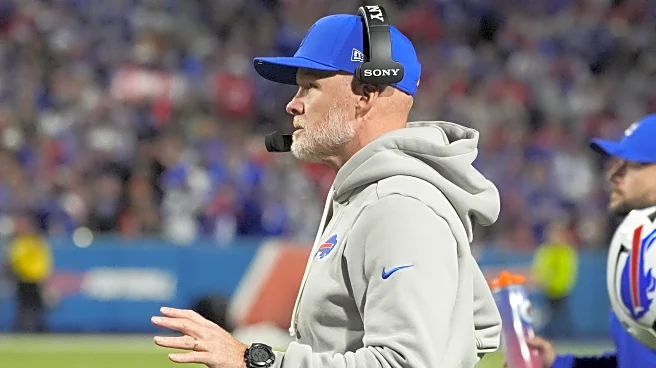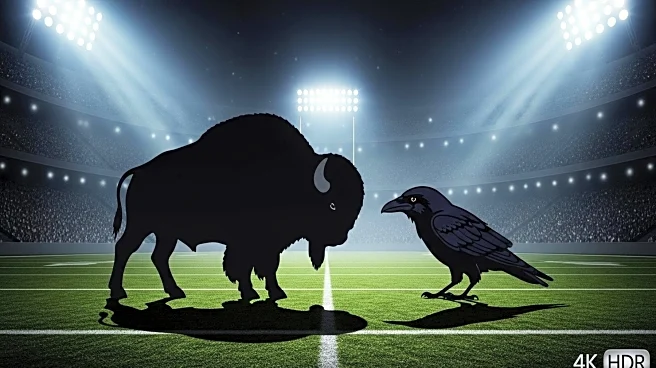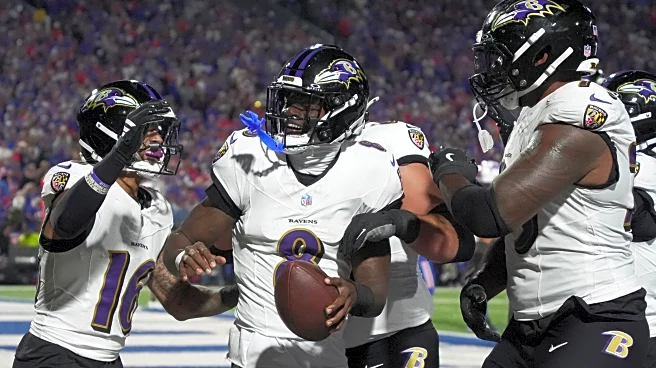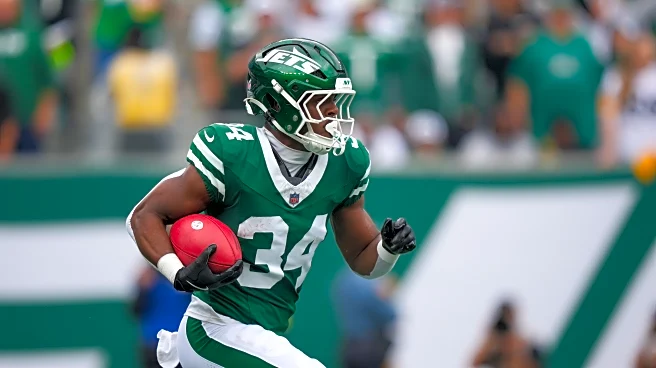What's Happening?
Roger Goodell, the NFL Commissioner, continues to hold a firm grip on the league as he enters his 20th season in charge. Goodell's tenure has been marked by significant challenges, including handling a lockout, negotiating collective bargaining agreements, and managing player discipline cases. He has also navigated the league through a domestic violence crisis and a pandemic, while facing criticism from various quarters, including President Trump. Despite these challenges, Goodell has been instrumental in the NFL's growth, overseeing a construction boom of stadiums and maintaining strong relationships with team owners. His leadership style, often described as forceful, has been both praised and criticized, but he remains a central figure in the league's operations.
Why It's Important?
Goodell's leadership is crucial for the NFL as it continues to be a dominant force in American sports. His ability to manage complex situations and maintain the league's profitability is vital for team owners and stakeholders. The NFL's revenue has grown significantly under his leadership, approaching $25 billion annually, which underscores his impact on the business side of the league. Goodell's approach to player safety and social justice issues also reflects the evolving priorities of the league, which are important for maintaining its public image and addressing societal concerns.
What's Next?
As Goodell continues his tenure, the NFL faces ongoing challenges, including media rights negotiations and maintaining player safety standards. The league's future will likely involve further expansion and innovation, with Goodell at the helm. His ability to adapt to changing dynamics and lead the league through potential crises will be critical in shaping the NFL's trajectory.
Beyond the Headlines
Goodell's leadership style and decisions have broader implications for the NFL's culture and governance. His focus on maintaining strong relationships with team owners and his strategic approach to league operations highlight the complexities of managing a major sports organization. The balance between business interests and player welfare remains a key aspect of his leadership.













